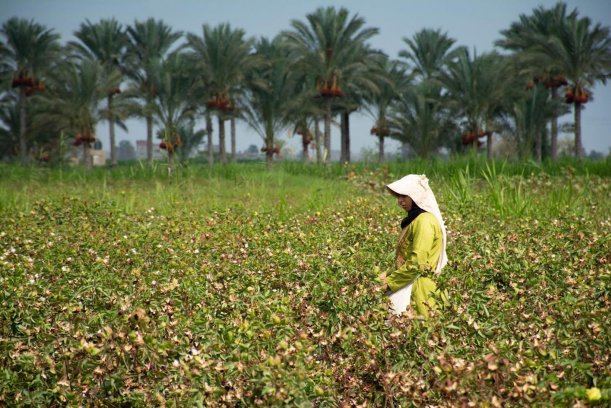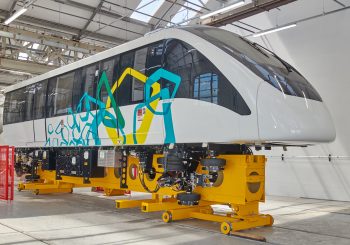Egypt stands at a crossroads as it contends with an expanding population, limited arable land, and the looming threats of climate change and water scarcity. With only 3.6 percent of its 995,450 square kilometers being arable, Egypt’s agricultural productivity hinges largely on the fertile Nile Valley and Delta.
However, as urbanization encroaches on these fertile lands, the government is seeking solutions in the vast desert expanses, aiming to transform these barren landscapes into productive agricultural hubs.
The Pressing Need for Expansion
Egypt’s population, nearing 120 million and growing at 1.79 percent annually, is projected to reach 150 million by 2050. With almost all of this population concentrated along the Nile, the pressure on the limited arable land intensifies. This demographic trend has heightened competition for land, exacerbating fragmentation and reducing the economic viability of small agricultural plots. Consequently, many farmers are tempted to convert their agricultural land for urban development, further shrinking the available agricultural space.
Additionally, external factors like rising sea levels and upstream dam constructions, such as the Grand Ethiopian Renaissance Dam, pose significant threats to Egypt’s water supply and soil salinity, jeopardizing agricultural productivity.
Historical Context of Land Reclamation
Land reclamation is not a new strategy for Egypt. Since the 1930s, successive governments have initiated projects to convert desert land into arable land. Over 85 years, these efforts have added 2.6 million feddans (1.09 million hectares) of agricultural land, representing a 44 percent increase. Despite these efforts, challenges persist, particularly related to costs, water management, and land distribution.
The 2014 Reclamation Initiative
In 2014, President Abdel Fatah El-Sisi reignited the reclamation efforts with an ambitious plan to reclaim 1.5 million feddans (630,000 hectares) initially, as part of a larger goal to reclaim 3 million feddans (1.26 million hectares) by 2030. This project, centered in the Western Desert, included integrated agricultural communities and industrial zones, aiming to transform areas like the Farafra Oasis into productive farmland.
The project’s initial phase involved drilling 10,000 irrigation wells, with 600 already underway, utilizing both Nile water and underground aquifers. The estimated cost for these wells is USD 2.13 billion (EGP 16.7 billion), with some wells powered by solar energy to reduce operational costs.
The Mostaqbal Misr Project
One of the flagship initiatives under El-Sisi’s vision is the Mostaqbal Misr (Future of Egypt) Project. Launched in 2024 near Dabaa, this project aims to reclaim 1.5 million feddans and create over 10,000 direct jobs and 350,000 indirect jobs. The first phase alone involves significant agricultural development, including the cultivation of crops like sugar beet, onions, potatoes, and strawberries.
During a recent ceremony, El-Sisi emphasized the importance of modern irrigation techniques and water management systems. He highlighted the need for efficient use of every drop of water, given Egypt’s arid climate and the potential impact of the Grand Ethiopian Renaissance Dam on the Nile’s flow. The government’s investment in desalination and water treatment plants underscores the critical role of water management in these reclamation projects.
Challenges and Skepticism
While the goals are ambitious, several challenges could hinder the success of these projects, especially considering Egypt’s economic constraints. Maintaining 5,000 irrigation wells in harsh desert conditions requires significant technical expertise and resources, raising concerns about the sustainability of using underground water.
Moreover, the management of reclaimed land remains a complex issue. The distribution of land and responsibility for infrastructure maintenance needs clear guidelines. The government’s previous projects have often stalled due to similar challenges, and the extent of private sector involvement in the current projects remains uncertain.
Economic Implications and Private Sector Involvement
Despite these challenges, the government envisions significant economic benefits from these reclamation projects. By increasing the area cultivated with strategic crops like wheat, Egypt aims to reduce its dependence on imports. Currently, Egypt imports 10 to 12 million tons of wheat annually. The Mostaqbal Misr Project alone has produced 1.1 million tons of wheat in six years, potentially saving USD 324 million (EGP 15.3 billion) in import costs.
El-Sisi has emphasized the need for private sector participation, although he acknowledges that large-scale projects necessitate centralized planning and state control. Incentives for private investment include road networks and water provision for agricultural purposes. The president also highlighted the importance of agricultural exports, which generated USD 9 billion (EGP 425.6 billion) in 2023, contributing 15 percent to the country’s GDP.
A Future of Self-Sufficiency and Sustainability
The Mostaqbal Misr Project and other reclamation initiatives symbolize Egypt’s resolve to achieve self-sufficiency in food production and secure a sustainable future for its growing population. These projects are not just about expanding agricultural land but also about building new communities, creating jobs, and enhancing economic stability.
However, the path to success is fraught with financial, technical, and logistical challenges. The government’s ability to navigate these obstacles and effectively manage the reclaimed land will determine the long-term viability of these ambitious projects. As Egypt pushes forward with its vision of transforming desert landscapes into fertile farmlands, the balance between ambition and pragmatism will be crucial in shaping the future of Egyptian agriculture.







Comments (0)